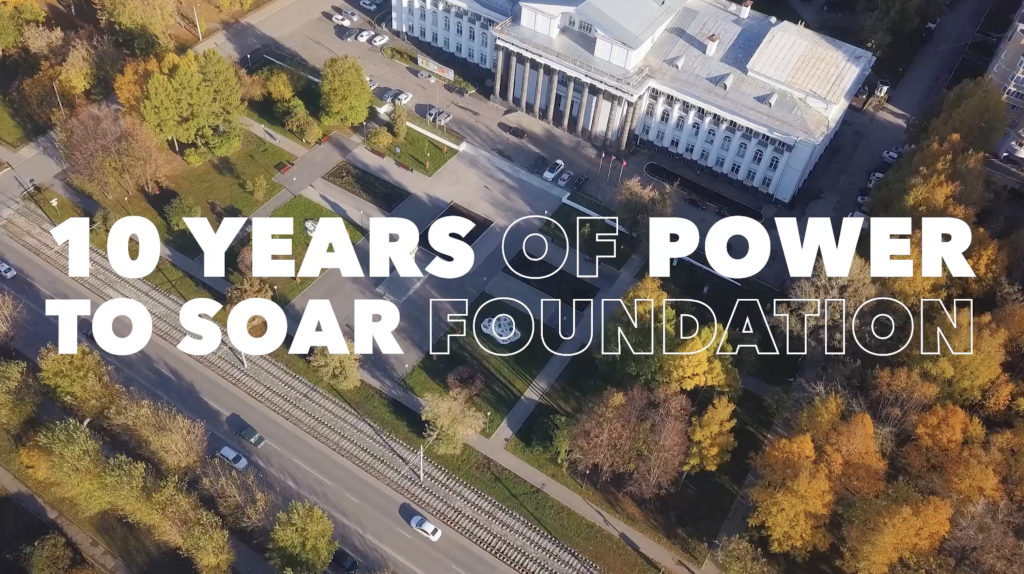The foster care system serves as a temporary solution for children whose families can’t provide a safe or stable environment. Each year, nearly 186,600 children (2022) in the U.S. enter this system, often due to neglect, abuse, or other circumstances endangering their well-being. While in care, children may live with foster families, relatives, or in group facilities, depending on their needs and available resources.
This article explores how the foster care system operates, from identifying unsafe home situations to placing children in protective care. It also delves into the system’s goals, such as reuniting families or finding permanent homes through adoption or guardianship. Despite its critical role, the foster care system faces challenges in ensuring stability and positive outcomes for children. Readers will gain insights into its structure, policies, and areas where improvements can better support the safety and future of vulnerable youth.
Key Takeaways
- The foster care system provides temporary care for children who cannot remain in safe or stable environments due to neglect, abuse, or other family challenges.
- Its primary goals include ensuring child safety, promoting family reunification when possible, and finding permanent solutions like adoption or guardianship if reunification isn’t feasible.
- Children in foster care come from diverse backgrounds and age groups, with placements ranging from foster families to relatives or group homes, depending on individual needs.
- Foster parents play a crucial role in offering stability, emotional support, and care, with resources like training, financial assistance, and support groups available to guide them.
- After foster care, children may reunify with their families, be adopted, or transition to independent living, with programs available to assist those who age out of the system.
- Common misconceptions about fostering, such as age or homeownership requirements, often deter potential foster parents, though the system is accessible to diverse individuals and families.
Table of Contents
What Is Foster Care?
Foster care is a temporary living arrangement for children who cannot safely stay in their homes due to abuse, neglect, or abandonment. State agencies, guided by federal policies, oversee this system, which ensures a child’s safety and well-being while their family works toward reunification or other permanent solutions.

Goals of Foster Care
The primary goal of foster care is to provide stability, safety, and support during a child’s time of need. Efforts focus on reuniting children with their birth families whenever it’s safe and possible. When reunification isn’t feasible, the next aim involves finding long-term solutions, such as adoption or placement with kinship guardians. The system strives to maintain continuity in a child’s life, preserving connections to their culture, community, and extended family.
Who Are Foster Children?
Foster children range from infants to young adults, entering the system for various reasons, including neglect, physical abuse, or the absence of a responsible guardian. They’re diverse in age, background, and individual needs. Some are part of sibling groups, while others may be teenagers or children with special emotional or physical care requirements. Each foster child carries unique experiences, and foster families play a crucial role in helping them recover, grow, and succeed.
Why Do Children Enter Foster Care?
Children enter foster care when their safety and well-being are jeopardized by circumstances in their families. These situations are often the result of severe underlying issues that prevent parents or guardians from providing safe, supportive homes.
Reasons for Placement
Neglect is a leading cause, where children are deprived of basic needs such as adequate food, safe housing, or access to education and health care. For instance, child welfare workers may discover unsanitary conditions or malnourishment, making immediate intervention necessary. Abuse is another major factor, including physical, emotional, or sexual harm. Exposure to domestic violence also creates unsafe environments, prompting removal from the home.
Parental drug addiction frequently exacerbates neglect or abuse. Substance dependency may impair judgment, leaving children unsupervised or exposed to dangerous situations. Incarceration can lead to placement when parents are unable to find a responsible caregiver. In rare cases, voluntary relinquishment occurs when a parent surrenders custody, often under safe haven laws or relinquishes a child they feel unequipped to care for.
Decision-Making Process
Social workers assess each child’s situation through home visits and thorough evaluations. Decisions prioritize the child’s best interest, seeking placements that ensure safety and continuity whenever possible. Kinship care, where children live with relatives or close family friends, is considered first. If no suitable kin are available, foster families or group homes are selected based on the child’s needs.
Placements aim to minimize disruption by keeping siblings together or within their community when feasible. The process also includes court oversight, which reviews the cases and approves care plans. By centering decisions on safety and stability, the foster care system strives to create supportive environments that help children thrive.
How Does the Foster Care System Work?
The foster care system provides a safe and structured environment for children who cannot remain in their biological homes due to challenges like abuse or neglect. It seeks to support children and families by ensuring safety, stability, and opportunities for long-term well-being.
Placement Process and Types
The placement process begins with reports of abuse or neglect, prompting child protective services to investigate. If a child is removed from their home, agencies prioritize kinship care, where relatives assume caregiving responsibilities. When this isn’t viable, children are placed with foster families or in licensed group homes.
Before placement, foster parents undertake a comprehensive pre-licensing home study to confirm their readiness to provide care. Agencies match children with families based on compatibility, addressing the child’s needs and the foster family’s strengths. Placements may range from temporary shelter care to long-term fostering or pre-adoption arrangements.
Role of Foster Parents
Foster parents play a pivotal role in fostering stability and emotional support for children facing traumatic transitions. They provide safe, nurturing homes where children can feel secure while awaiting reunification with family, placement with kin, or adoption. This includes meeting basic needs like food, shelter, education, and healthcare.
Foster parents collaborate with social workers, biological families, and courts to align on the child’s best interests. They are expected to promote normalcy by involving children in community activities, supporting cultural identities, and encouraging peer relationships. Though challenges may arise, foster parents also receive training and support to navigate fostering demands effectively.
Support Services for Families and Children
The foster care system offers support services to ensure the well-being of both children and foster parents. Children have access to medical care, therapy, educational resources, and recreational activities to aid in their adjustment. Foster families benefit from financial stipends, training opportunities, and caseworker assistance.
Support groups for foster parents provide a space to connect, share advice, and gain insights from those with similar experiences. Agencies often provide respite care, allowing families to recharge while ensuring continuity for the child. Using these resources effectively helps foster families thrive in their role while contributing to positive outcomes for children.
What Happens After Foster Care?
Children’s journeys after foster care vary based on their circumstances. The foster care system prioritizes safe, stable transitions, whether through reunification, adoption, or independent living. Each path offers unique challenges and opportunities.
Reunification and Permanency
Reunification remains the primary goal for most children. Approximately 50% of foster care cases conclude with reunification when parents meet court mandates, such as completing parenting classes, securing safe housing, or undergoing substance use treatment. Social workers and foster families collaborate to support this process, ensuring a smooth transition back home. When reunification is unattainable, permanency plans focus on adoption, legal guardianship, or placement with relatives, providing children with long-term stability.
Aging Out of the System
Around 20,000 youth leave foster care annually by aging out at 18 or 21, depending on state policies. Without permanency solutions in place, these young adults face significant hurdles, including housing instability, limited access to education, and unemployment. Programs like extended foster care, life skills training, and transitional housing aim to address these issues, equipping youth with resources to navigate independence. Foster parents can play a crucial role in mentoring and offering ongoing support during this critical phase.
Adoption as an Option
When reunification isn’t possible, adoption provides children with a permanent family. Over 50,000 children are adopted from foster care each year. This option is often ideal for younger children but also significant for teens and sibling groups, who are less likely to find adoptive homes. Prospective adoptive parents work closely with agencies to match with children based on mutual needs and preferences. Foster parents often transition to adoptive parents, continuing to provide love and care in a permanent capacity.
Common Misconceptions About Foster Care
Foster care is surrounded by myths that can deter potential foster parents. Addressing these misunderstandings helps create a more accurate picture of the system and encourages informed decisions.
- Age Limits for Foster Parents
There’s no maximum age for becoming a foster parent. Agencies evaluate health and energy levels to ensure prospective foster parents can meet a child’s needs. Older adults often bring valuable life experience and stability to foster care.
- Homeownership Requirements
Owning a home isn’t a criterion for fostering. Renters with safe, spacious accommodations that comply with safety standards can also provide a supportive environment.
- Employment and Time Commitment
Full-time workers can foster successfully when they manage their schedules to prioritize a child’s well-being. Foster parenting doesn’t require someone to stay at home; it requires flexibility and dedication to foster children’s care.
- Fostering While Parenting Biological Children
Fostering isn’t limited to those without children. Many foster families effectively support both foster and biological children, fostering a sense of inclusivity and unity.
- Support Systems for Foster Parents
Concerns about lack of support are common. Foster agencies provide resources like counseling, training, financial allowances, and connections to support groups that assist parents in navigating challenges.
By dispelling these misconceptions, more individuals and families can consider becoming foster parents, offering love, stability, and care to children in need.
How to Become a Foster Parent
Becoming a foster parent involves preparation, commitment, and close collaboration with foster care agencies. The process ensures that children are placed in safe, nurturing homes where their emotional and physical needs are met.
Requirements and Qualifications
Prospective foster parents need to meet specific requirements to ensure they can provide a stable, caring environment. They must be at least 21 years old and undergo a comprehensive background check, including criminal and child abuse screenings, for everyone 14 years and older in the household. Financial stability is evaluated, but wealth isn’t a requirement—foster parents simply need adequate resources to meet the basic needs of a child.
Agencies assess the suitability of the home, examining physical conditions like space and compliance with safety standards. Emotional stability is also a priority, backed by factors such as healthy relationships with family, friends, and one’s own children, if applicable. The ability to nurture, supervise, and address the child’s unique needs is essential. Diversity in marital status, faith, race, gender, or sexual orientation is welcomed, as support for a child’s identity is critical in fostering.
Certification Process
The certification process ensures readiness and compatibility in foster parenting. It typically starts with an orientation session led by foster care agencies or social services. This session provides an introduction to foster care roles, responsibilities, and expectations.
After orientation, applicants complete a detailed application that gathers personal, household, and lifestyle information. A caseworker then conducts an in-depth home study, evaluating the environment’s safety, family dynamics, and parenting approach. Training sessions follow, covering topics like trauma-informed care, working with birth families, and supporting the child’s identity.
Upon completing training and meeting approval criteria, individuals receive certification. Certified foster parents collaborate with agencies to ensure successful placements, offering children the care and stability they need.
Frequently Asked Questions
What is the main goal of foster care?
The main goal of foster care is to provide stability, safety, and support to children in unsafe home environments. Whenever possible, the system prioritizes reuniting children with their birth families. If reunification isn’t feasible, long-term solutions such as adoption or placement with kinship guardianship are pursued.
Why do children enter foster care?
Children enter foster care due to neglect, abuse, or unsafe living conditions caused by issues like parental drug addiction, incarceration, or domestic violence. Child protective services intervene to ensure the child’s safety and well-being.
How does the foster care placement process work?
The placement process starts with reports of neglect or abuse, followed by an investigation. Priority is given to placing children with relatives (kinship care), and if that’s not possible, they are placed with licensed foster families or group homes.
What are the requirements to become a foster parent?
Requirements vary by state, but generally include being at least 21 years old, passing background checks, completing a home study, and attending foster care training. Foster parents can be single, married, renters, or homeowners.
How long does it take to become a licensed foster parent?
The foster parent licensing process usually takes 3 to 6 months. This includes attending an orientation, completing training, undergoing a home study, and passing background checks.
What financial support do foster parents receive?
Foster parents receive a monthly stipend to help cover the child’s basic needs, such as food, clothing, and housing. Additional support may include access to medical care, therapy, and educational resources.
Can foster parents adopt their foster children?
Yes, foster parents can adopt their foster children if reunification with the birth family isn’t possible. Many adoptions from foster care occur because foster parents transition to becoming adoptive parents.
Are siblings kept together in foster care?
Whenever possible, the foster care system strives to keep siblings together. If placing them together isn’t feasible, efforts are made to maintain sibling connections through visits and regular communication.
What happens when children age out of foster care?
Around 20,000 youth age out of the foster care system annually. They may face challenges like housing instability and limited education access. Programs offering extended foster care, life skills training, and financial assistance aim to provide support during this transition.
Are there age or marital restrictions for foster parents?
Foster care agencies welcome diversity. There are no maximum age limits, and foster parents can be single, married, or in a partnership. Agencies assess individuals based on their capacity to provide a safe, loving environment for children.
Can full-time workers become foster parents?
Yes, full-time workers can foster children. Managing routines and collaborating with child care providers or support systems helps foster parents balance work and care responsibilities. Many agencies offer resources to assist working foster parents.
What support is available for foster parents?
Foster parents can access financial stipends, therapy, training, and counseling through foster agencies. Support groups and respite care are also available to help foster parents navigate challenges and provide the best care for children.
Is fostering possible if I already have children?
Yes, fostering is possible for individuals or families with biological children. Agencies assess how fostering may impact your family and ensure stability for all children in the household.
How many kids are placed in foster care each year?
Nearly 186,600 children (2022) enter the foster care system annually in the U.S. due to neglect, abuse, or unsafe living environments.
Can potential foster parents choose the child they foster?
Foster care agencies match children and foster families based on compatibility, including age, needs, and family dynamics. While preferences can be discussed, the best interest of the child is prioritized.






